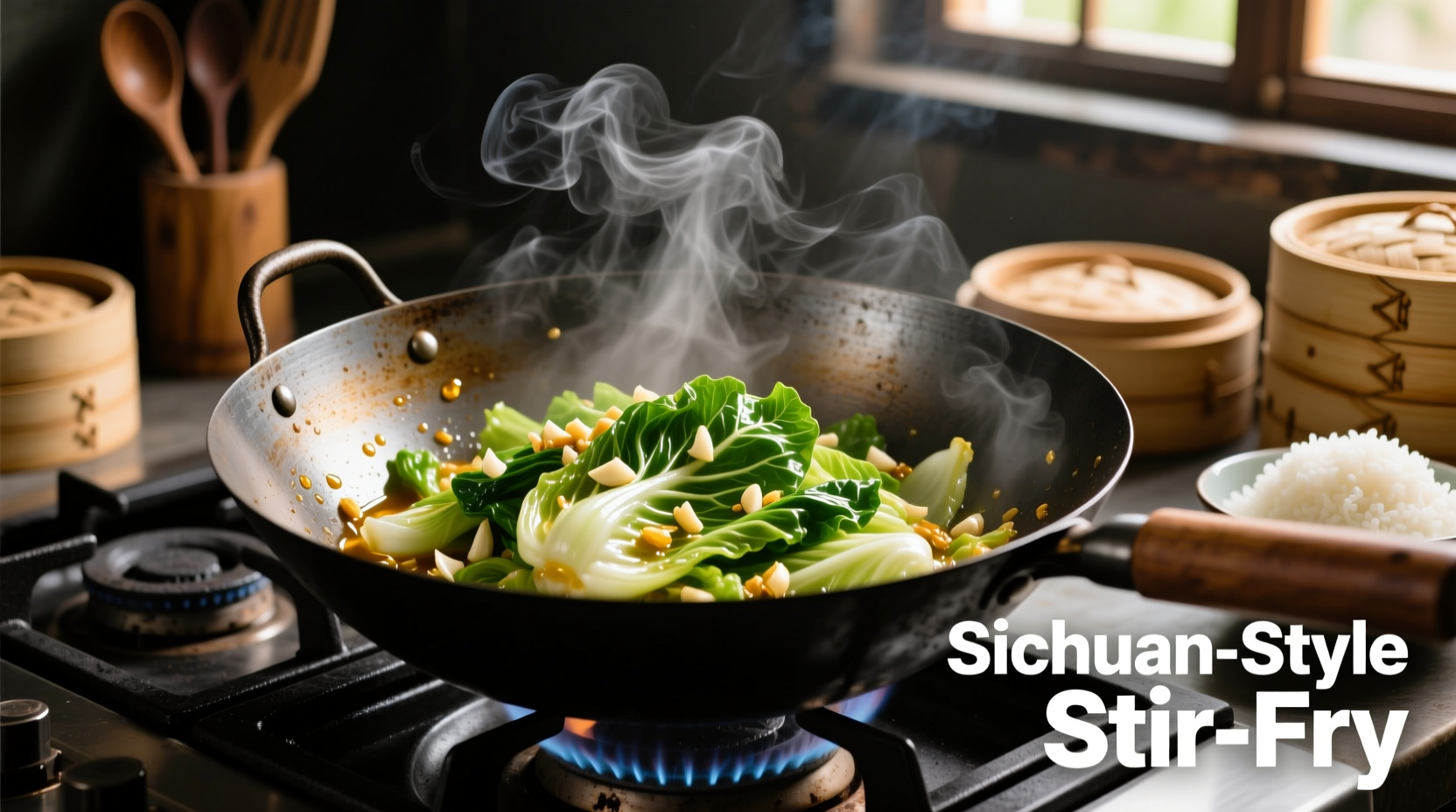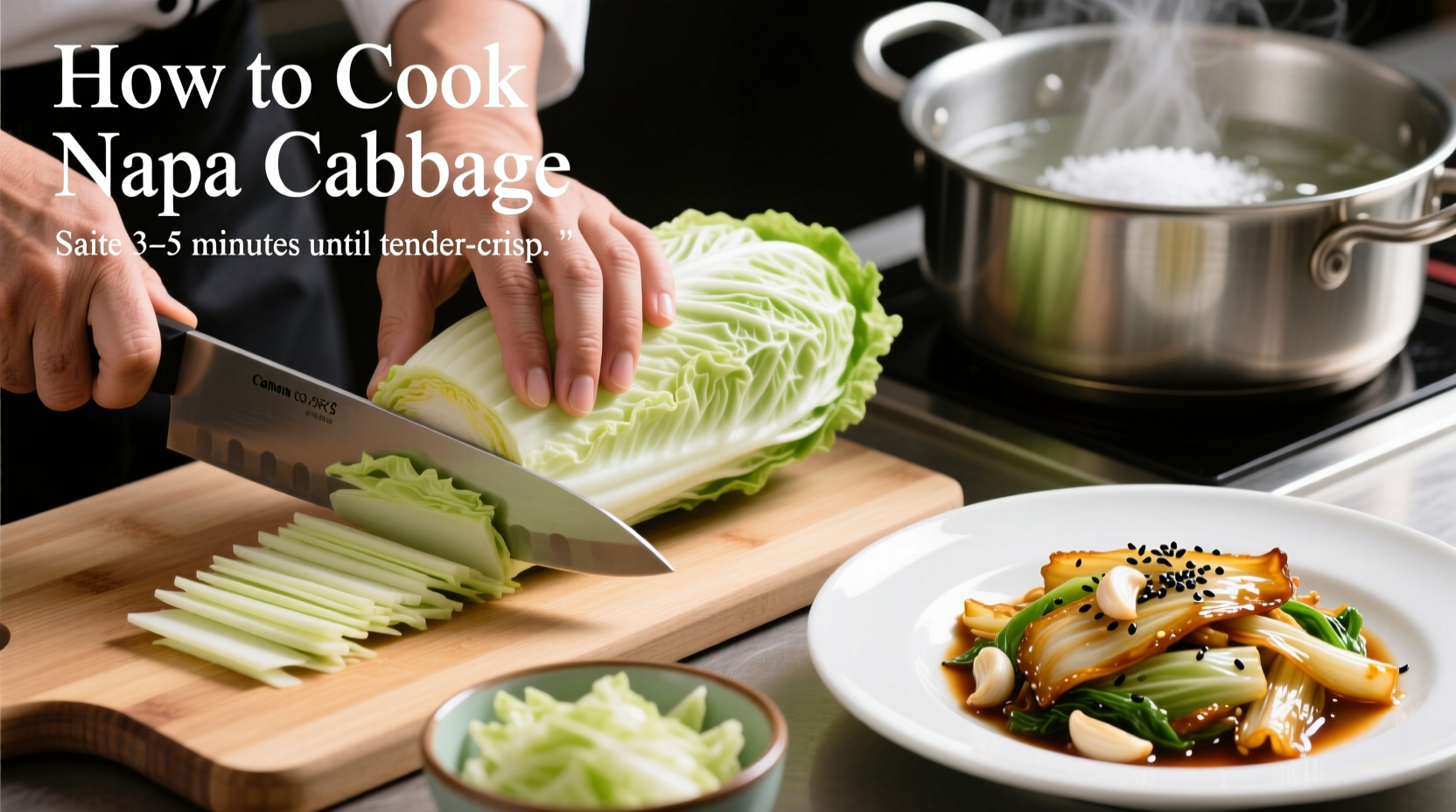Napa cabbage, also known as Chinese cabbage, transforms from crisp raw ingredient to tender-cooked delight with proper technique. Unlike regular cabbage, its elongated shape and mild, slightly sweet flavor make it perfect for quick cooking methods that preserve its unique texture. This complete guide reveals professional chef secrets for selecting, preparing, and cooking napa cabbage across multiple cuisines - whether you're making a simple stir-fry, hearty soup, refreshing salad, or traditional kimchi.
Selecting and Preparing Napa Cabbage
Choosing fresh napa cabbage ensures optimal cooking results. Look for firm, heavy heads with crisp, vibrant green leaves and minimal browning. The stem should feel solid, not soft or mushy. According to USDA agricultural guidelines, peak season runs from late fall through early spring when the cabbage develops its characteristic sweet flavor profile (USDA Agricultural Marketing Service).
Proper preparation prevents sogginess and preserves texture:
- Washing: Cut lengthwise into quarters, then rinse each section under cold water, separating leaves to remove trapped dirt
- Drying: Use a salad spinner or pat dry with clean towels - excess moisture causes steaming instead of stir-frying
- Cutting: Slice crosswise into 1-inch strips for stir-fries, or chop finely for soups and salads
| Napa Cabbage vs Regular Cabbage | Napa Cabbage | Regular Green Cabbage |
|---|---|---|
| Shape | Elongated oval | Rounded ball |
| Leaf Texture | Thin, tender, crinkled | Thick, dense, smooth |
| Cooking Time | 3-5 minutes | 8-12 minutes |
| Flavor Profile | Mild, slightly sweet | Peppery, more pungent |
Top 5 Cooking Methods for Napa Cabbage
1. Perfect Stir-Fried Napa Cabbage
Stir-frying preserves napa cabbage's delicate crunch while enhancing its natural sweetness. Heat 1 tablespoon peanut oil in a wok or skillet over high heat until shimmering. Add 2 minced garlic cloves and 1 teaspoon grated ginger, stir-frying for 30 seconds until fragrant. Add 4 cups sliced napa cabbage (white and light green parts first), stir-frying for 2 minutes before adding the darker green leaves. Finish with 1 tablespoon soy sauce and 1 teaspoon sesame oil. The entire cooking process should take no longer than 5 minutes to maintain ideal texture.

2. Napa Cabbage Soup Base
Napa cabbage adds subtle sweetness to broths without overpowering other ingredients. For clear Asian-style soups, add the white stem portions during the last 8-10 minutes of cooking, followed by the leafy green parts in the final 3-4 minutes. The cabbage should remain slightly crisp when served. In heartier stews, add chopped cabbage with other vegetables about 15 minutes before serving. According to culinary research from the Culinary Institute of America, napa cabbage releases natural glutamates when cooked, enhancing umami flavors in soups without additional seasonings.
3. Raw Preparation for Salads and Slaws
Raw napa cabbage shines in fresh preparations. Thinly slice leaves crosswise and soak in ice water for 15 minutes to maximize crispness. Drain thoroughly before dressing. For Asian-inspired slaws, toss with rice vinegar, toasted sesame oil, and a touch of honey. The mild flavor pairs exceptionally well with citrus dressings and light vinaigrettes. Unlike regular cabbage, napa requires less marinating time - just 10-15 minutes before serving preserves its delicate texture.
4. Basic Kimchi Fermentation
Napa cabbage serves as the foundation for traditional Korean kimchi. Cut a whole head into quarters lengthwise, then slice crosswise into 2-inch pieces. Soak in 10% saltwater brine for 2-3 hours, rinsing thoroughly before mixing with gochugaru (Korean red pepper flakes), garlic, ginger, and fish sauce or vegetarian alternative. Pack tightly into a fermentation vessel, ensuring cabbage remains submerged. The fermentation timeline follows this pattern:
- Days 1-2: Room temperature (68-72°F) for initial fermentation
- Days 3-7: Transfer to refrigerator (34-38°F) for slower maturation
- Optimal flavor: 2-3 weeks for balanced tanginess and crunch
5. Roasting and Grilling Techniques
While less common, roasting napa cabbage creates delicious caramelization. Cut into thick wedges, brush with olive oil, and roast at 400°F for 15-18 minutes until edges brown slightly. For grilling, place halved heads cut-side down directly on the grill for 4-5 minutes until char marks appear. The natural sugars caramelize beautifully, creating a sweet contrast to the slight bitterness of the char. Food science research shows that moderate dry-heat cooking (300-400°F) maximizes the development of flavor compounds in brassica vegetables like napa cabbage without generating excessive bitterness.
Essential Flavor Pairings
Napa cabbage's mild flavor makes it incredibly versatile. Professional chefs recommend these pairings:
- Asian cuisine: Garlic, ginger, soy sauce, sesame oil, shiitake mushrooms, and white pepper
- Mediterranean style: Lemon zest, olive oil, pine nuts, and fresh dill
- Protein pairings: Tofu, shrimp, chicken, and pork complement napa cabbage's delicate flavor
- Acid balance: Finish cooked dishes with rice vinegar or citrus juice to brighten flavors
Avoid overpowering napa cabbage with strong spices like cumin or heavy curry blends, which mask its subtle sweetness. The optimal cooking window for napa cabbage is narrow - undercook slightly rather than risk mushiness, as it continues cooking from residual heat after removal from the stove.
Nutritional Benefits Worth Noting
Napa cabbage delivers impressive nutrition with minimal calories. One cup (70g) of cooked napa cabbage contains just 11 calories while providing:
- 60% of your daily vitamin C needs
- 30% of vitamin K requirements
- Significant potassium and folate
- Dietary fiber for digestive health
Unlike regular cabbage, napa cabbage contains higher levels of certain antioxidants while maintaining lower levels of compounds that cause gas and bloating, making it more digestible for many people according to research published in the Journal of Agricultural and Food Chemistry.
Common Cooking Mistakes to Avoid
Even experienced cooks make these napa cabbage errors:
- Overcooking: Results in mushy texture - cook just until tender-crisp
- Improper washing: Neglecting to separate leaves leads to gritty dishes
- Adding all parts at once: White stems need 1-2 minutes more cooking than green leaves
- Using low heat: Napa cabbage needs high heat for proper texture development
When stir-frying, always add the white stem portions first, followed by the green leafy parts 1-2 minutes later. This timing difference ensures uniform doneness - a technique perfected in traditional Chinese cooking methods that Chef Liu Wei emphasizes in his culinary instruction.
Frequently Asked Questions
Can I substitute napa cabbage for regular cabbage in recipes?
Yes, but adjust cooking times downward by 30-50% and expect a milder flavor profile. Napa cabbage works particularly well in dishes where you want a delicate texture.
How do I prevent napa cabbage from becoming watery when cooked?
Thorough drying after washing is crucial. Salt the cut cabbage lightly and let it sit for 10 minutes, then squeeze out excess moisture before cooking - this draws out water while enhancing flavor.
What's the best way to store leftover cooked napa cabbage?
Store in an airtight container in the refrigerator for up to 3 days. Reheat gently in a skillet rather than the microwave to preserve texture.
Why does my stir-fried napa cabbage turn out soggy?
This usually happens when the pan isn't hot enough or when too much cabbage is added at once, causing steaming instead of searing. Cook in batches with proper high heat for best results.











 浙公网安备
33010002000092号
浙公网安备
33010002000092号 浙B2-20120091-4
浙B2-20120091-4